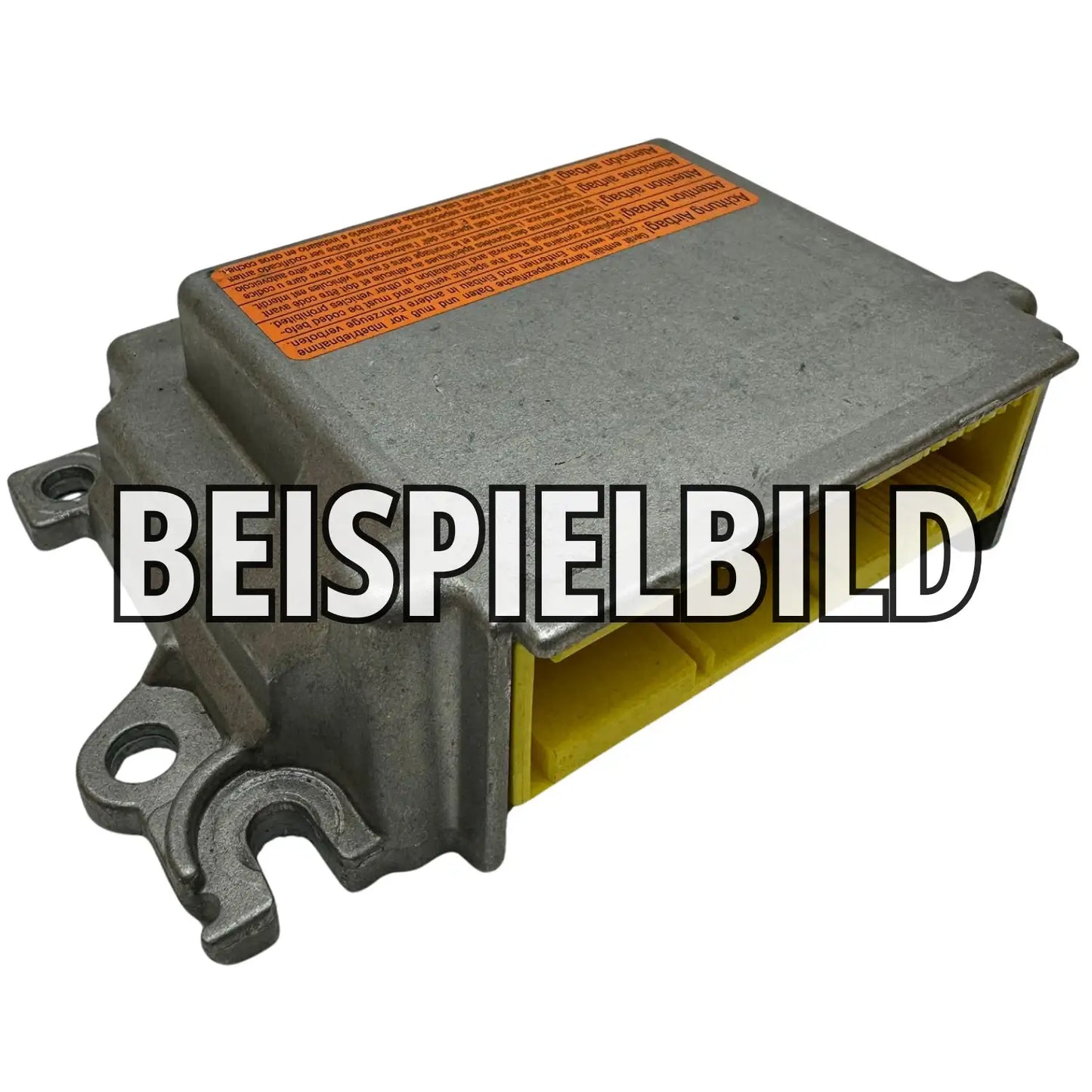What is a Pontiac Aztek GT airbag control module?
The Pontiac Aztek GT airbag control unit (SRS SDM or ACM) is the central safety unit that monitors sensors, detects impact forces, and controls the millimeter-precise deployment of all restraint systems in the event of an accident. It ensures maximum occupant safety and requires prompt Pontiac Aztek GT airbag control unit repair in the event of a malfunction.
This module performs continuous self-diagnosis of the entire airbag system. Any errors are detected and stored in the control unit's internal error memory.
After an accident, it stores important crash data that is essential for correct diagnosis and repair of the system. Proper function is crucial for your safety.
Why is the Pontiac Aztek GT airbag control unit defective?
A defect in the Pontiac Aztek GT airbag control unit often occurs after accidents, as crash data blocks the module and causes it to malfunction. Internal memory or communication errors are also common causes. A successful Pontiac Aztek GT airbag control unit repair usually requires a specialized reset or replacement of the control unit.
Common causes are "hard codes" such as a full crash data buffer (B1212) or memory errors (B1230), which require replacement or professional reset.
Communication errors (e.g., B1000) or short circuits in the airbag circuit (B1013, B1014) can also lead to malfunctions. These indicators indicate the need for professional diagnosis and repair.
Common error codes for Pontiac Aztek GT airbag control unit repair
Specific OBD-II B codes indicate internal problems with the airbag control module or its communication errors, necessitating a Pontiac Aztek GT airbag control module repair. These codes affect the module itself, not external sensors, and require specific repair to restore full safety functionality.
- B1000 → Control unit communication error → Indicates problems with the control unit communicating with other vehicle modules.
- B1013 → Airbag circuit short to ground → Indicates a short circuit within the airbag control module.
- B1014 → Primary Crash Sensor Circuit Short to Ground → Refers to an internal short in the control module, not the external sensor.
- B1021 → Fuse sensor not installed correctly → Indicates incorrect installation or detection of the internal fuse sensor.
- B1212 → Crash data log full (hard code) → Requires a reset or replacement of the control unit after an impact.
- B1230 → Airbag control unit memory error → Indicates an internal defect in the memory of the airbag control unit.
- B1240 → Airbag circuit fault → A general fault indicating a problem in the airbag control unit itself.
Some of these "hard codes" cannot be erased with standard OBD scanners; they require specialized reset procedures.
What part numbers are available for the Pontiac Aztek GT airbag control unit repair?
For Pontiac Aztek GT airbag control unit repairs, only specific OEM part numbers from General Motors are validated, ensuring full compatibility. Reliable supplier part numbers from other manufacturers have not been found or confirmed for this specific Pontiac Aztek GT airbag control unit, limiting the selection to original parts.
The following original GM part numbers are confirmed for the Pontiac Aztek GT airbag control module:
- 10330595
- 12229010 (Alternative/OEM replacement number)
- 10342497
- 12238360 (Alternative/OEM replacement number)
These numbers are valid only for the Pontiac Aztek's SRS SDM and not for sensors or other vehicle modules. They are from GM's production line and have been verified multiple times.
Compatibility and installation for the Pontiac Aztek GT airbag control unit repair
The airbag control unit is specifically designed for the Pontiac Aztek GT (model years 2001-2005). Precise matching to the vehicle's VIN is essential for a safe Pontiac Aztek GT airbag control unit repair. After replacement, reprogramming by a specialist workshop may be required to ensure full functionality and safety.
The module is not necessarily compatible with other vehicle models, as each control unit is usually programmed specifically for that vehicle.
The installation is usually carried out centrally in the vehicle interior, often under the center tunnel or in the center console, where it is well protected and networked.
It has special connectors to the crash sensors, airbag inflators and vehicle electronics, ensuring secure signal transmission.


